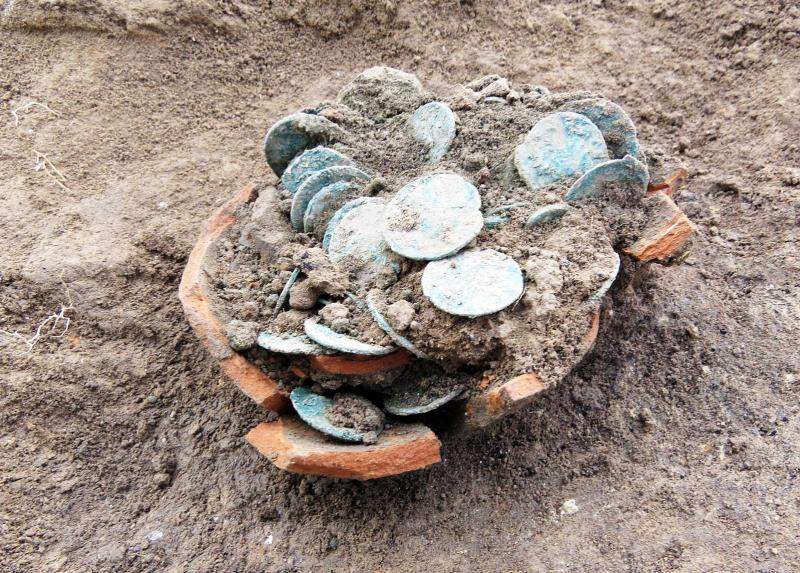Cremona, treasure trove of ancient Roman coins discovered
After the exceptional discovery in Como a few weeks ago, another treasure trove of ancient coins from the Roman era has been found in Lombardy. The discovery took place at the archaeological site of Bedriacum, near Calvatone (province of Cremona), and credit is due to a team of archaeologists from the University of Milan, led by Maria Teresa Grassi, professor of classical archaeology at the Department of Cultural and Environmental Heritage. The discovered coins, about one hundred and forty, probably date to the age of Emperor Galienus, who reigned between 253 and 268. They were hidden in the bottom of a pottery jar and are “antoninians,” coins minted from the empire of Caracalla (198 to 217): they had the value of a double denarius and must have been struck in silver, although they were often just coated.
Probably the owner had hidden them with the idea of coming back for them at a later date. The era to which they date was an age of deep crisis, and the coeval evidence found in the same settlement in which the coins were found indicates that by that time the village of Bedriacum had already fallen into ruin. In particular, the location of the hoard in which the pot was found clearly indicates, according to archaeologists, that that part of the village had already been abandoned. These are important indications because, according to the archaeologists, they make it possible to bring forward the date of the abandonment of the settlement, which until now was believed to have occurred between the fourth and fifth centuries.
The coins are now entering the laboratory for restoration to be carried out by the Superintendence of Cremona, Lodi and Mantua. The discovery was made possible thanks to an excavation campaign by the University of Milan funded by the university itself, the municipality of Calvatone and the Lombardy Region.
In the photo: the coins found. Ph. Credit University of Milan
 |
| Cremona, treasure trove of ancient Roman coins discovered |
Warning: the translation into English of the original Italian article was created using automatic tools. We undertake to review all articles, but we do not guarantee the total absence of inaccuracies in the translation due to the program. You can find the original by clicking on the ITA button. If you find any mistake,please contact us.





























